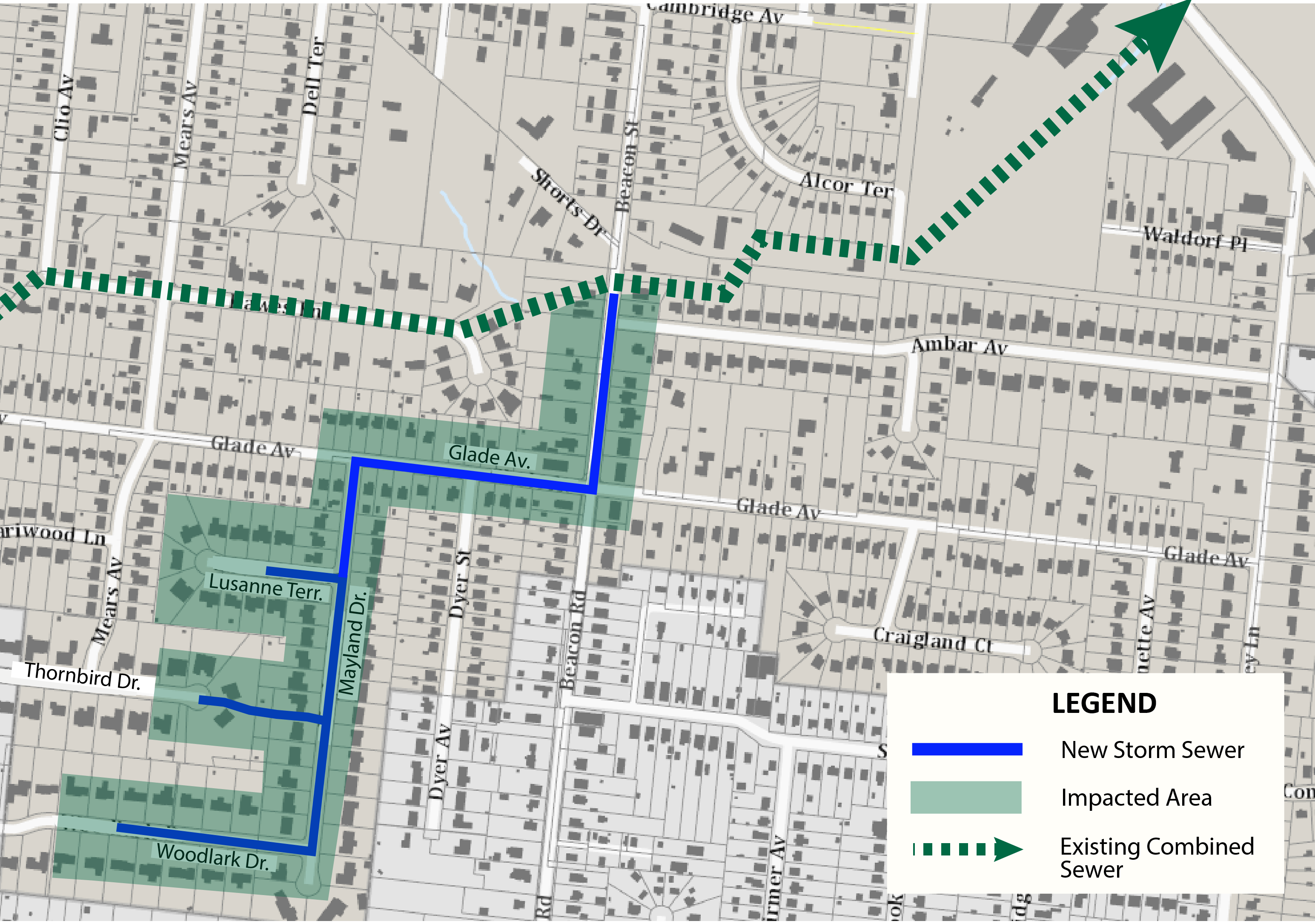Mt. Washington Source Control
Overview
About 47 properties along Woodlark Drive, Thornbird Drive, Lusanne Terrace, and Mayland Drive in Mt. Washington have been experiencing chronic sewer backups since 2011. MSD has designed and is now constructing a solution that will help reduce the sewer backups and also allow for future stormwater controls to reduce combined sewer overflows (CSOs) from CSO 182 into Berkshire Creek, a tributary of the Little Miami River.
The project includes new storm sewers along Woodlark, vicinity of Thornbird, Lusanne, Mayland, Glade Avenue, and Beacon Road to capture stormwater and convey it to a new downstream connection point on the existing combined sewer north of the intersection of Beacon Road and Ambar Avenue (see project map above).
MSD will install about 4,400 feet of storm sewer, ranging in diameter from 12 to 54 inches.
Project Status
Here's the current project status:
- This project was completed in early November 2024 (including roadway restoration). The project began in early August 2023.
- MSD's construction contractor was Rack and Ballauer Excavating Co. Inc.
